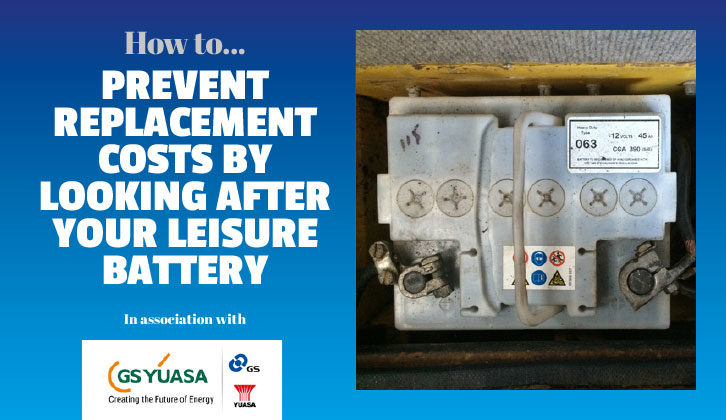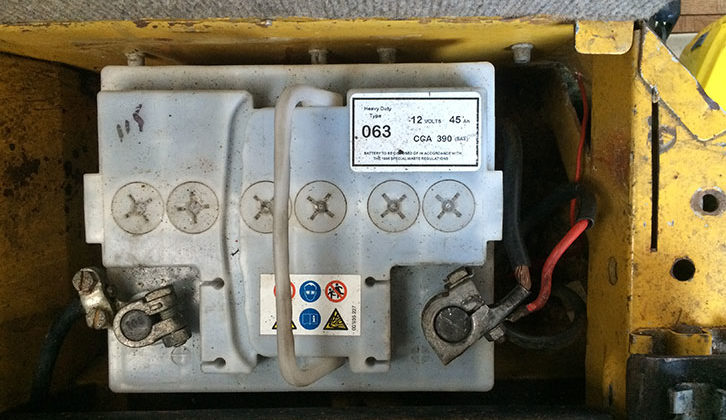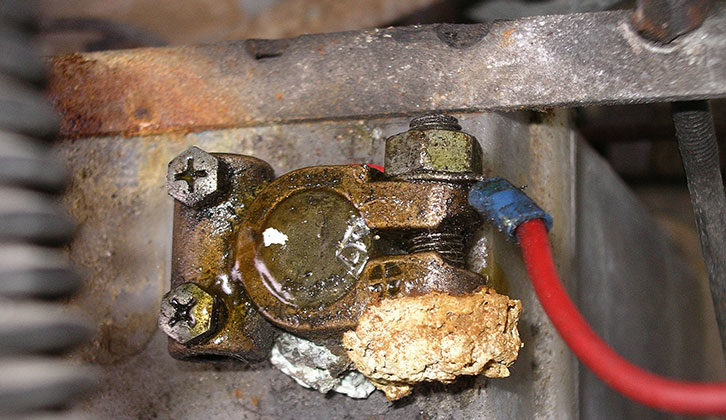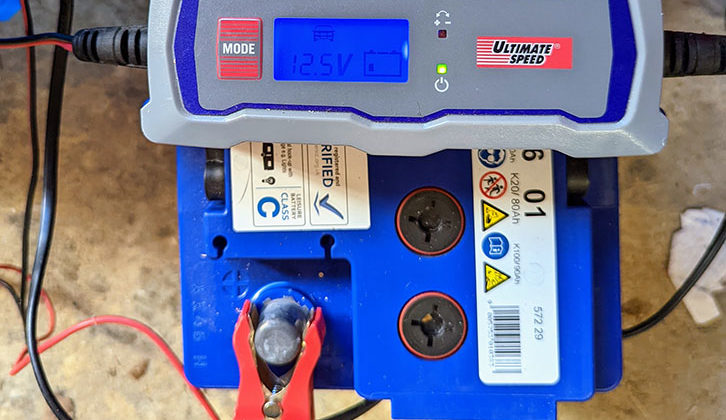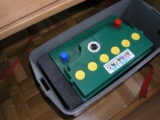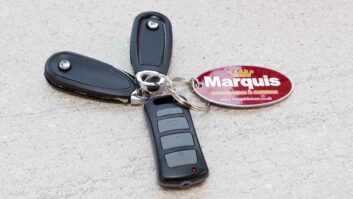A steady supply of electricity is vital for keeping you comfortable on tour, but equally, being let down by a failing leisure battery can ruin your adventures without warning. With just a few basic tips, you can keep your batteries healthy and your plans on track.
What is a battery?
In the simplest terms, a battery is a plastic box full of electricity. All motorhomes have at least one battery, but the vast majority have at least two.
The main motorhome ‘starter’ battery does the same thing as in a car and providing the van is started and driven about regularly, this one will pretty much take care of itself. The second or ‘leisure’ battery is not quite as fit and forget.

When you are using your motorhome, there are two main ways that your leisure battery gets charged. If you are on site, and plugged into a hook-up, the leisure battery will be topped up by the mains charger fitted as standard in all modern motorhomes. In addition, when driving from pitch to pitch, power from your vehicle’s alternator will top up the leisure battery and the vehicle battery using the ‘split-charging’ system.
This should be considered the minimum care your battery gets. When the van is getting a lot of use, the battery will receive charge but will never fully replenish relying on these methods. To keep your battery in optimal condition, you really need better quality charging.
Add a solar panel
A solar panel is a no-brainer if your motorhome is stored outside. A good quality solar panel will keep your battery topped up. They are not cheap, but when the sun is out, your battery will get the benefit. It doesn’t need to be hot, summer sunshine either. Even a bright winter day will provide enough power to keep your battery healthy and stop it discharging and deteriorating.
Charge your leisure battery better
There are various things that will kill a battery and top of the list is being left in a discharged state. If you expect that your leisure battery will be left unused for a while, at least ensure it is fully charged before it is laid up. Batteries naturally discharge when not in use so if you charge it fully before leaving it, it will be longer before it discharges again. Leave your battery discharged for any length of time and its life expectancy will be shortened and performance will degrade.
Different types of battery need different charging approaches to get the most out of them. Standard battery chargers just throw power at a battery and will charge it to around 80% of capacity. To get more than that, you need to charge your battery better.
If you aren’t a battery expert, buying a ‘smart’ or ‘intelligent’ battery charger takes the guesswork out of good quality charging. Simply tell the charger what type of battery you are charging and it will sense the state of the battery and work out the best way to charge it.
Intelligent chargers offer ‘staged charging’ rather than a constant charge at one voltage. Varying the voltage is better for the health of the battery, so these chargers sense the state of the battery and charge at the optimum level. Once the battery reaches 100%, the charger switches to a ‘float’ charge to maintain the battery without overcharging. Some modern motorhomes have intelligent charging systems built in but most don’t. Standalone smart chargers start from around £100. Hooking up your leisure battery to a smart charger from time to time will prolong it’s life and effectiveness.
Clean the battery
Even if your battery is in good shape, a little bit of care goes a long way. Corroded battery terminals can occur as a chemical reaction between the battery terminal posts and the clamps. The corrosion can cause problems both charging and using your battery.

Check the tightness of the cable connections, clean the terminals and protect the terminals with a smear of Vaseline or lithium grease. Look for signs of damage to the battery casing too. This takes ten minutes, costs virtually nothing but will help ensure you get the most out of your battery.
Secure the battery
Batteries are held in place by straps or clamps. Take some time to ensure the battery is securely fastened. If it can move around excessively, the connections can be loosened and internal damage to the battery can occur with excess vibration.
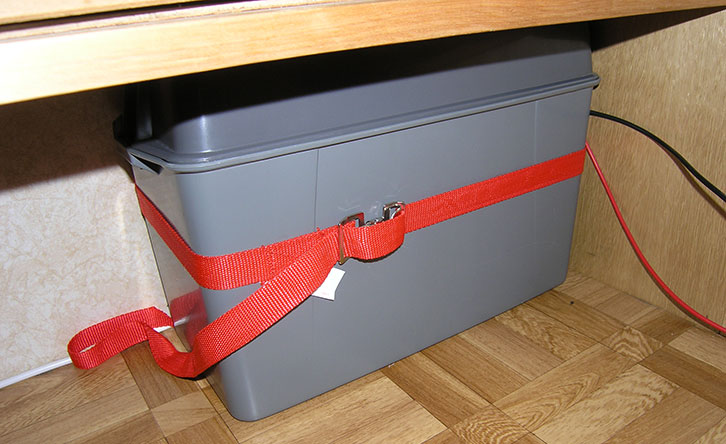
Low electrolyte level
For traditional lead-acid batteries, low electrolyte levels will cause the lead plates that comprise the battery to deteriorate. Ensure the battery is flooded with distilled water, especially when charging.
